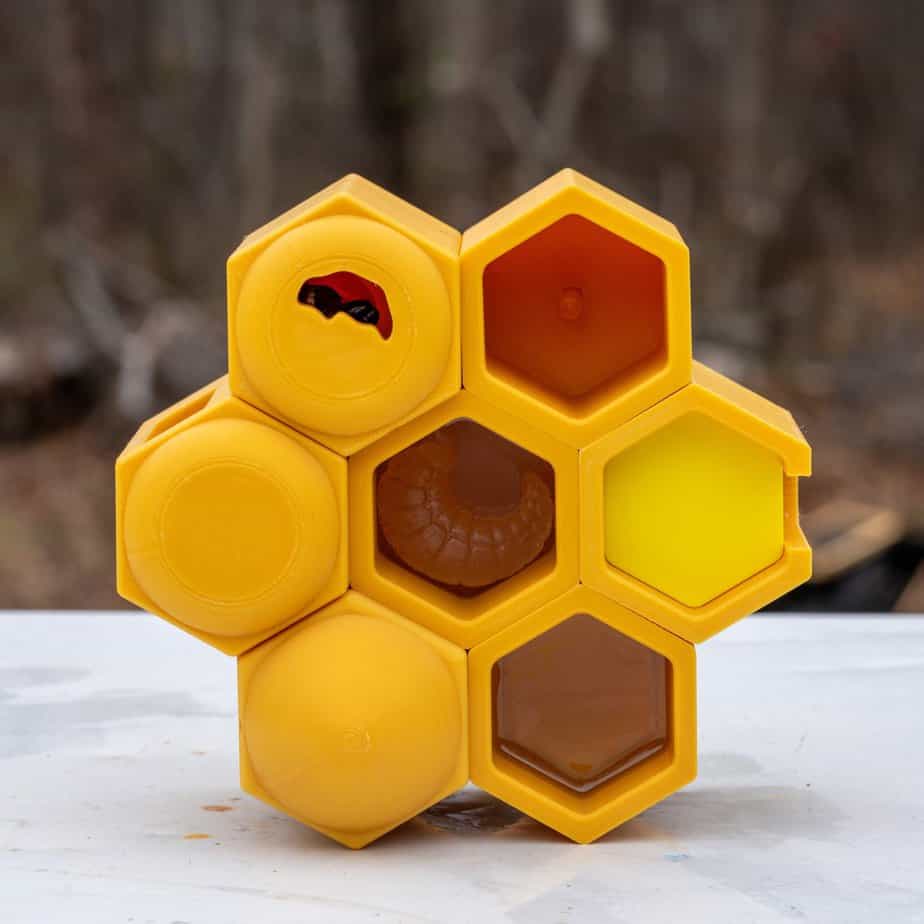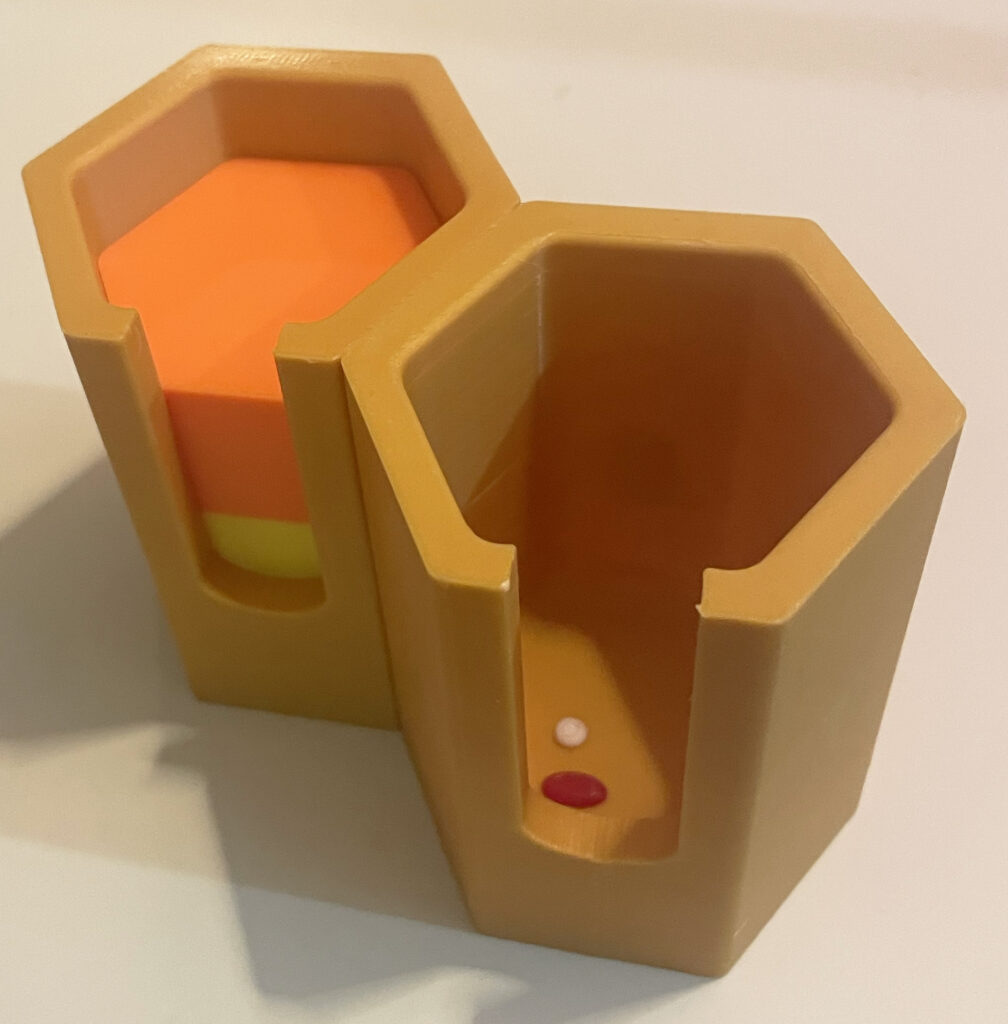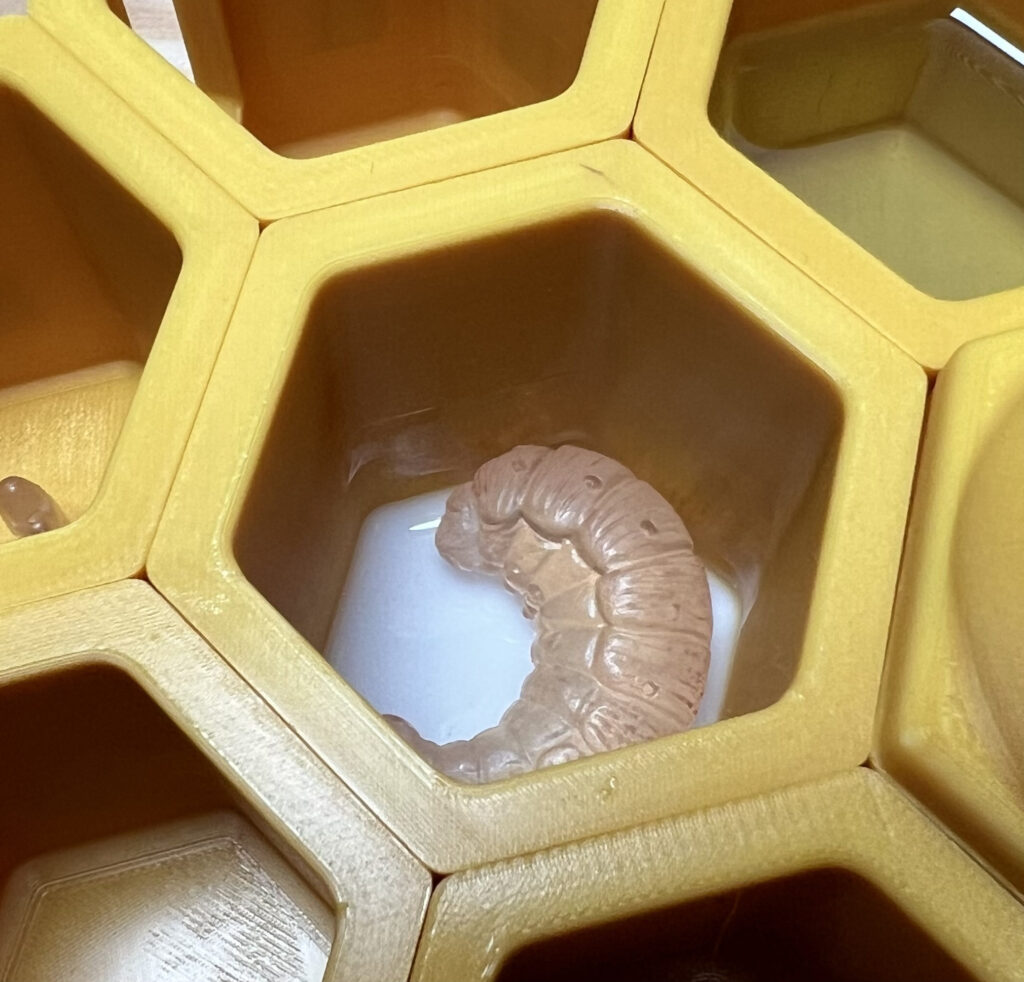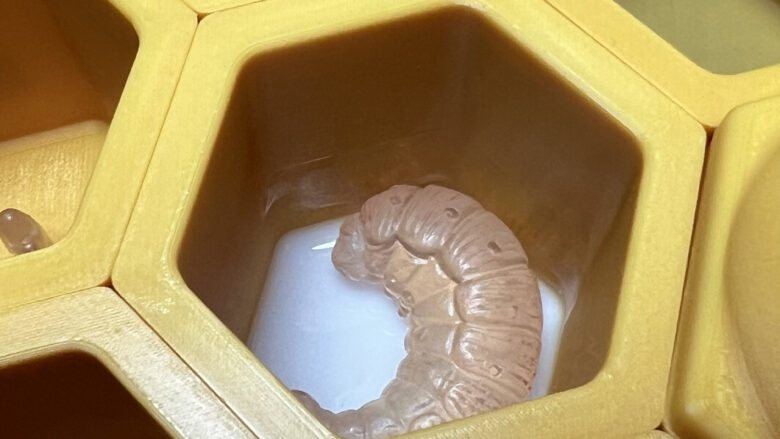Beekeeper designed and built model vividly and accurately gives a vision inside the cell
By Matt Gagle, MSBA Member

[Editor's Note: We invited Matt to present his super-cool creation after acquiring/working with one. We are proud to have this kind of creativity and skill in our community!]
Life in the Hive is a 3D-printed model showcasing essential parts of a beehive, designed to be accessible for both kids and adults. My journey began in 2022, when I started 3D printing human-scale Varroa mites. The following year, I added a Small Hive Beetle model to the collection and continued brainstorming ideas to educate people about honeybees and their lives.
The inspiration for a new project arrived when someone inquired about creating a model to illustrate the life cycle of a bee. Existing models, although informative, lacked the context of life inside a beehive. My goal was to develop a teaching tool suitable for children, beginner beekeeping courses, and even for display at a farmer's market booth.

I aimed for a model that was not only visually appealing but also versatile in its arrangement and use. The design process spanned approximately two months, during which I experimented with multiple prototypes, varying in size and connection methods. Initially, I employed a clip system on the bottom of the cells.
However, its durability was put to the test by my 2-year-old son, affectionately nicknamed Quality Control, who demonstrated that the clips were prone to breaking when pulled with force. This experience taught me that if you want something thoroughly tested, a 2-year-old is highly recommended!
Both my wife and another beekeeper suggested the incorporation of magnets. I eventually decided to embed magnets within the cell walls, a feature that has become my favorite aspect of the model due to the ease with which the cells can be rearranged to represent different hive contents.

In designing the cells, I prioritized the inclusion of elements beneficial for various educational levels. The core set covers the basic development stages from egg to adult bee. Additionally, I incorporated a honey cell and a pollen cell to demonstrate the bees' diet. Recognizing the importance of pest management in beekeeping, I included a representation of the Varroa mite life cycle within a pupal cell, featuring both a mature mother mite and an immature mite.

The kit also contains three cells illustrating a covered cell, a cell with a worker bee emerging, and a drone cap. Beyond the core set, I offer queen cells and a package of hive pests, including larvae, small hive beetles, and Varroa mites, as additional accessories. Since its launch in December of 2023, the set has travelled all over the United States and the world. It has been used to educate teachers in Alabama and new beekeepers in Canada, is available for check out in a library in Ohio, is on display at farmers markets in Florida and California, and is teaching the public about honeybees in New Zealand.
The core set and accessories are available on my Etsy shop at https://apertureapiary.etsy.com or on my website at https://aperturehoney.com.
[Return to February 2024 BeeLine newsletter]

